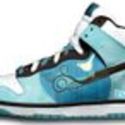-
About
- About Listly
- Community & Support
- Howto
- Chrome Extension
- Bookmarklet
- WordPress Plugin
- Listly Premium
- Privacy
- Terms
- DMCA Copyright
- © 2010-2025 Boomy Labs

 Erin Hunter
Erin Hunter
Listly by Erin Hunter
The Chao Sam Phraya National Museum was built to exhibit a rich haul of artifacts discovered on the premises of Wat Racha Burana and Wat Mahathat and other temples in and around Ayutthaya.
The 50,000 sq meter three building complex set picturesquely by the water and is devoted to exhibiting 2400 objects excavated in the late 1950s from the premises of two temples in Ayutthaya and from other parts of Thailand. They comprise of Buddha images of varying sizes, terra cotta and pewter votive tablets and other artifacts from the Dvaravati, Lop Buri and Ayutthaya periods. Anantara Cruises one of luxurious Bangkok Cruises takes passengers on overnight trips all the way to Ayutthaya
Construction of the museum was funded by auctioning part of the votive tablets found in Wat Racha Burana. Chao Sam Phraya National Museum is considered one of the important museums of Thailand.
A 2 meter high stone statue of the seated Buddha on the ground floor of the main museum building that occupies pride of place is from the Dvaravati Period. The bronze Buddha head dated to the U Thong Period displays advanced bronze casting techniques. Other exhibits include door panels and carved gables of exquisite craftsmanship from the Ayutthaya period and many big and small Buddha images in bronze, terracotta and stone in seated and standing poses and ceramics items and painted fabrics. Many of the larger finds had to be carefully reconstructed.
Among the most valued exhibits are the gold and jeweled objects displayed in two vault-like rooms on the second floor of the main building. They were discovered in a burial pit in Wat Burana and from a shaft in Wat Mahathat. Statues of various sizes of the seated and standing Buddha and other golden offerings by devotees over a long period form a greater part of the collection.
A golden reliquary with a Buddha relic, a golden lion in a fish shaped gilded container, gold jewellery, all manner of golden utensils from water pots to betel nut sets and trays and boxes and a bejeweled caparisoned elephant in a kneeling pose are among the exhibits.
Objects recovered from looters of Wat Racha Burana form part of the collection and have an interesting story to tell. The discovery of royal regalia in a burial pit in Wat Burana was one of the most exciting finds as it confirmed the ceremonial use of royal regalia. Unfortunately the looters got to it before the archaeologists.
The crown and the scepter that were among the looted grave goods were never found. Among the pieces of royal regalia in the museum is a 115 cm long bejeweled golden sword with a double edged iron blade. Other regalia are miniatures made for the funeral. Unfortunately royal clothing could not be excavated except for ones with gold thread.
While two buildings are exhibition halls the third building on the complex is a Thai house dedicated to a governor of Ayutthaya and furnished according to fashions at the turn of the 20th century.
